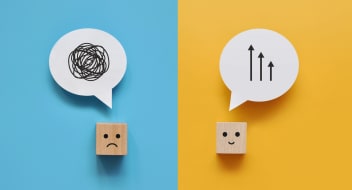Showing top 0 results 0 results found
Showing top 0 results 0 results found
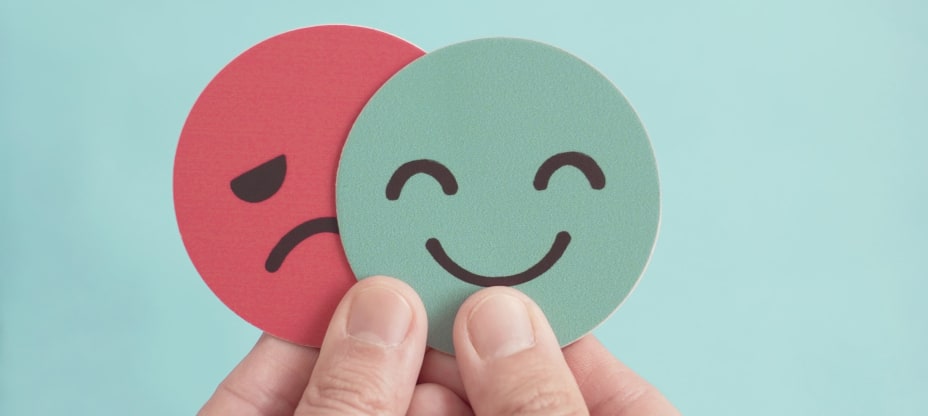
How can you make your business available 24/7 and take care of multiple customers simultaneously with the same customer experience and engagement level? With an AI chatbot. How do you ensure your business is memorable and customer expectations are met with a warm welcome and next-level customer service? You need to give your AI chatbot personality.
The personality is what makes an AI chatbot feel consistent and memorable. It helps customers connect with the bot on an emotional level, even if the interaction is purely functional. Creating a chatbot's tone means deciding how the bot talks, what it cares about, reacts to different scenarios, and even what kind of humor or empathy it expresses.
This article focuses on why it is important for a natural language processing chatbot to have a personality, what that personality is, and how to ensure the chatbot persona matches the brand identity and increases customer engagement.
- What is a chatbot personality?
- Why is a personality important when creating a bot?
- Factors determining if a brand needs a chatbot persona
- Components of chatbot personality
- How to create a personality for your chatbot
- 5 chatbot platforms great for developing chatbot personas
- Why is ChatBot a great platform for creating a chatbot personality?
- How to create a chatbot personality in ChatBot
- Conclusion
What is a chatbot personality?
A bot's personality is the character and voice it adapts to interact with users. It shapes how the AI chatbot sounds, responds, and behaves throughout conversations, making interactions more engaging and human-like. It’s not just about what the bot says but how it says it — whether it’s friendly, playful, formal, professional, or witty and sarcastic. The personality gives the chatbot a consistent style and tone, influencing everything from word choice and sentence structure to how it handles humor or empathy.
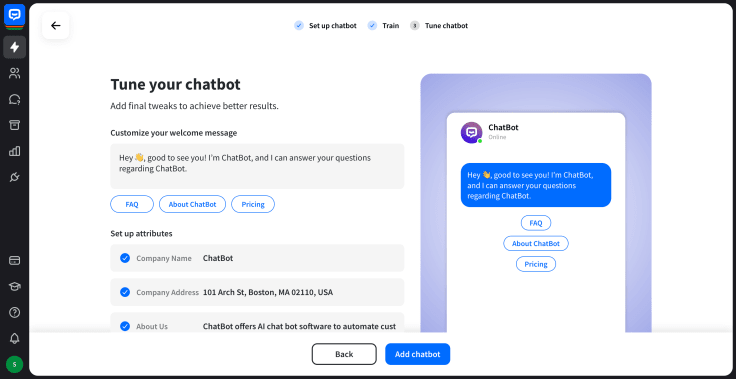
A chatbot with a warm, friendly personality might use casual language, emojis, and friendly jokes to create a welcoming experience and establish an emotional connection. On the other hand, a bot designed to be authoritative and knowledgeable would use precise language, a more formal tone, and focus on delivering clear, accurate information.
Why is a personality important when creating a bot?
Without personality, a chatbot is just a sterile, mechanical interface that provides information or performs tasks. When you add a bot's personality, the experience becomes more human-like and relatable, significantly improving customer engagement and retention.
Personality helps to build trust and rapport with customers. Just like people prefer dealing with friendly or professional customer service representatives over cold, robotic ones, they also prefer approachable and authentic chatbots. A chatbot with consistent personality traits feels more predictable and reliable, which makes a person feel more comfortable and confident in their interactions.
It also plays a critical role in brand image. For businesses, a chatbot’s personality should reflect the brand’s identity and values. Personality can also boost engagement and entertainment value. When users feel entertained or emotionally connected to a chatbot, they’re likelier to continue interacting with it, provide user feedback, or even recommend it to others.
Additionally, personality helps a chatbot handle difficult or sensitive situations more gracefully. A little warm emotions or humor can make frustrating situations less painful, even for straightforward customer service bots.
A distinct personality helps transform a basic chatbot into a fictional character that customers might enjoy interacting with or feel emotionally attached to. That connection is what makes a chatbot successful.
Factors determining if a brand needs a chatbot persona
Whether a brand needs a chatbot personality depends on the goals, audience, and interactions it wants to create. If your brand relies heavily on user engagement, customer service, or entertainment, a chatbot personality can enhance user experience and boost satisfaction.
Brands aiming to build emotional connections or memorable experiences can benefit greatly from a distinct chatbot personality that reflects their identity and values. If an audience expects a friendly, approachable, or even humorous interaction, creating a chatbot personality can help meet those expectations. However, if a brand is focused on providing straightforward, technical, or highly formal services, a personality might be less essential, though still helpful for clarity and consistency.
Consider whether a chatbot personality aligns with your brand's tone, messaging, and purpose; it should enhance, not undermine, your overall identity. Also, if your brand needs to stand out in a crowded market, a unique chatbot personality can be a differentiating factor that leaves a lasting impression.
If your business requires a consistent voice across multiple platforms, a well-designed personality ensures uniformity in communication. Evaluate whether your chatbot’s purpose involves building trust, loyalty, or entertainment, as these areas benefit most from a well-defined personality.
Components of chatbot personality
A well-crafted personality makes the chatbot feel more alive and engaging. It ensures the AI chatbot’s persona matches the brand's identity and that users enjoy interacting with a unique or relatable chatbot. A distinctive personality makes the chatbot more memorable.
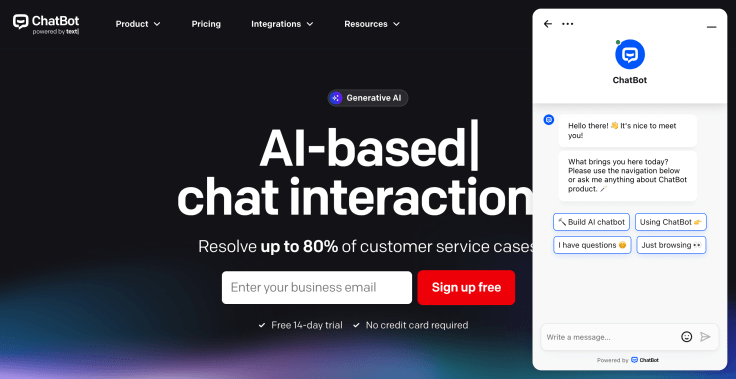
Communication style
Key aspects:
- Choose from formal, friendly, humorous, sarcastic, polite, professional, etc.
- Vocabulary choice and sentence structure of AI responses
- Use of slang, emojis, abbreviations, or professional jargon
The communication style of a chatbot’s personality is how it expresses itself through words, tone, and overall approach to conversation. It includes the choice of vocabulary, sentence structure, level of formality, and even humor, as well as the level of emotional connection with which the chatbot answers.
A friendly personality and casual AI chatbot might use playful language, emojis, and contractions to feel approachable and relatable to your brand identity. On the other hand, a professional or authoritative chatbot would use precise, formal language and avoid slang or overly casual expressions.
The style also determines how direct or subtle the chatbot’s responses are; some might be straightforward and efficient, while others may be more conversational and elaborate. Tailoring the communication style to match the chatbot’s purpose and audience is essential for creating a cohesive and positive experience. A customer support bot must be polite, patient, and clear, while a social chatbot for entertainment can be quirky and humorous. An empathetic bot might use comforting words and soft language when responding to a distressed user.
Maintaining consistency in communication is crucial to building user trust and making the chatbot feel authentic. Different personalities have different communication styles, which makes the chatbot’s persona come alive and genuine to customers.
Tone and mood
Key aspects:
- Set the energetic, calm, empathetic, assertive, playful, wise, etc. conversation tone
- Consider the emotional quality of the AI responses
The communication tone refers to the attitude or emotional flavor conveyed in its responses, whether cheerful, calm, professional, sarcastic, or empathetic. Mood is the overall emotional atmosphere the chatbot creates through interactions, such as upbeat, soothing, serious, or playful.
A chatbot with a cheerful tone will often use positive language, exclamations, and light humor to keep conversations lively and engaging. In contrast, a formal and serious chatbot may maintain a steady, composed tone that conveys reliability and expertise.
The tone and mood must align with the chatbot’s purpose—an educational bot might be encouraging and motivating, while a financial advisor bot should be calm and reassuring using a more formal tone. They also influence how well the chatbot handles sensitive topics, with empathetic tones that are especially valuable in mental health or customer support scenarios.
Maintaining a consistent tone and mood helps customers feel comfortable and builds trust, especially during longer interactions with detailed information. A mismatch between the chatbot’s tone and the situation can feel jarring, so the right tone and mood are essential for making the chatbot's personality feel genuine.
Backstory
Key aspect:
- A fictional or real background that shapes the bot’s behavior throughout the conversation
Establishing a backstory can ensure the chatbot’s personality feels authentic and aligned with its intended character. AI technology can create an avatar to complement the created persona and enhance the backstory.
For example, a travel AI assistant bot might be designed as an adventurous world explorer, sharing personal experiences and travel tips as if it's been to every corner of the globe. A customer service bot for a medieval-themed game could speak like a courteous knight or a wise mage, enhancing the thematic experience for users and establishing a strong brand image with the data provided during training.
The backstory also provides a basis for the bot’s quirks, preferences, or even limitations, such as a storytelling bot that claims to be a library-dwelling creature obsessed with collecting tales. When users perceive a bot as having a unique origin or purpose, it becomes more memorable and engaging, building an emotional connection.
It also offers a creative framework for crafting purposeful responses. A well-crafted backstory makes the chatbot more than just a functional tool; it becomes a persona customers can connect with and enjoy interacting with.
Knowledge scope and biases
Key aspect:
- What the bot knows, prefers, or prioritizes
The knowledge scope of an AI chatbot’s persona identifies the range and level of detailed information and data it can access and provide to users. It also determines what topics the chatbot is knowledgeable about, whether a broad, generalist AI chatbot or a specialized expert in a particular domain. Medical chatbots may focus on health-related information, while fashion assistant bots might focus on conversation in providing style advice and outfit recommendations.
On the other hand, biases are the inherent inclinations or preferences the chatbot might have based on its training data, programming, or intentional design. While biases can be introduced unintentionally, they can also be a deliberate part of the chatbot’s persona to create a unique perspective or identity. For instance, a chatbot that promotes eco-friendly practices may have a positive bias toward sustainable choices.
Understanding the chatbot’s knowledge scope and biases is essential for setting user expectations and maintaining brand image. If a chatbot claims to be an expert in a certain field, providing poor-quality answers could damage a person's trust.
Biases can also influence how the AI chatbot reacts to certain topics or phrases, affecting the tone and nature of the answers. Awareness of these elements helps developers fine-tune the chatbot’s persona to deliver consistent, relevant, and unbiased interactions whenever appropriate.
Goals and motivations
Key aspects:
- Consider if the bot is meant to be helpful, entertaining, informative, persuasive, etc.
- These goals shape how the chatbot interacts with customers
The goals and motivations of a chatbot’s personality identify what it aims to achieve and why it answers the way it does. These elements give the AI chatbot a sense of purpose, whether providing customer support, offering companionship, educating users, or simply entertaining them.
A chatbot designed for customer service might be motivated by solving a person's issues quickly and efficiently while maintaining a friendly, helpful tone. Conversely, a storytelling large language model could be driven by a desire to share interesting narratives and spark the user’s imagination. Establishing clear goals helps keep the chatbot’s conversations consistent and purposeful, enhancing user engagement.
Motivations also influence the chatbot’s conversational style—whether it strives to be informative, playful, persuasive, or empathetic. For instance, a health-focused bot may be motivated to encourage positive habits and offer gentle guidance during difficult moments. If a chatbot’s motivation is tied to a backstory, like the personality of a fictional character aspiring to learn from customers, it can make the customer experience more dynamic and engaging, full of positive emotions.
Goals and motivations can be practical, such as resolving queries, and emotional, like building rapport with users. Understanding these details ensures the chatbot’s personality feels intentional, coherent, and aligned with its intended purpose.
Persona traits
Key aspects:
- Decide on kind, assertive, curious, playful, stoic, etc.
- How the bot’s personality shines through in conversation
Depending on the desired character, these attributes can include kindness, curiosity, wit, professionalism, enthusiasm, or stubbornness. Establishing clear persona traits helps ensure the AI chatbot’s responses feel consistent and authentic throughout all interactions. For example, a chatbot designed to be friendly and playful might frequently use light humor, emojis, and casual language. In contrast, a stoic and knowledgeable AI chatbot would favor precise, formal language with minimal embellishment.
Persona traits also influence how the bot handles different scenarios, such as responding with patience and empathy when a user is frustrated or with excitement and encouragement when a user shares good news. These traits build the brand's identity, help with positive user feedback, and keep the conversation going.
Carefully chosen persona attributes can make the chatbot more relatable or appealing to its target audience. They also help differentiate the AI bot from others by giving it a unique voice and style. Persona traits can be adjusted or refined to enhance user experience or align with evolving goals.
How to create a personality for your chatbot
Creating a chatbot’s personality involves defining, designing, and implementing personality attributes that make the chatbot persona feel unique and engaging. Here’s how to do it:
1. Define the purpose and goals
Start by clearly understanding the purpose of your AI chatbot:
- What is the chatbot supposed to achieve?
- What kind of experience do you want customers to have?
Deciding on the purpose and goals is the first step in creating a chatbot's personality. It shapes everything from how the bot answers questions to how it behaves in different scenarios. This step is about clearly understanding what the chatbot is supposed to achieve and how it should make a person feel.
When you know your chatbot's purpose and goals, you can tailor its personality to be effective and engaging. Without clear objectives, the chatbot’s persona may feel inconsistent or poorly suited to the intended user experience.
Example
- Purpose: customer support
- Goal: provide quick, accurate, and friendly assistance to user inquiries
- Motivation: resolve issues efficiently while ensuring user satisfaction and building loyalty
If the purpose and goals aren’t clearly stated, the chatbot’s personality can feel directionless or mismatched to user expectations. For example, a chatbot meant to provide customer support but designed with a sarcastic, playful tone may frustrate users rather than assist them. Such bots' behavior might result in a poor quality of your brand image.
2. Identify your target audience
Tailor your chatbot’s personality to suit the people it will interact with:
- A playful, humorous tone might work well for young audiences, while a professional and knowledgeable tone might be better for business clients
- Consider cultural nuances, expectations, and preferred communication styles
It is crucial in building an AI chatbot’s personality as it determines how it will communicate, behave, and fulfill its purpose effectively. Knowing who will interact with your bot allows you to tailor the language, tone, style, and features to meet customer expectations and needs.
Creating a chatbot without considering your target audience is like writing a book without knowing who will read it. The personality you give your chatbot must resonate with the intended customers to be engaging, effective, and memorable. How the bot speaks to a person defines how the person thinks of your brand.
Example
- Mental health companion bot (diverse audience):
- Warm, empathetic, and gentle tone
- Non-judgmental, encouraging, and deeply compassionate
The interactions will feel unnatural or frustrating if your chatbot’s personality doesn’t match your audience’s expectations or preferences. An AI chatbot for gamers should sound different than one designed for legal advice. By knowing your target audience, you can build a bot designed specifically for them, with the right amount of emotions incorporated into the AI answers.
3. Choose persona traits
Decide on specific characteristics that define your chatbot’s personality:
- Traits could be friendly, sarcastic, wise, curious, empathetic, authoritative, playful, or supportive
- These attributes will influence the chatbot’s tone, language, and responses
Choosing the correct traits is the step to decide on the unique characteristics that make your AI chatbot feel like a distinct personality rather than just a generic tool. It’s about deciding how your bot answers, behaves, communicates, and responds based on the goals you’ve established and the audience you’re targeting.
Persona attributes give your AI chatbot depth, consistency, and relatability. They help a person understand what to expect from the chatbot, whether it's playful jokes, professional advice, or empathetic support. Well-chosen traits make the chatbot feel intentional, engaging, and true to its purpose, leaving only positive emotions after the chat ends.
Example
- Entertainment bot: playful, creative, witty, energetic
Choosing the right personality traits makes your chatbot feel purposeful and engaging and enhances the customer experience. A person will appreciate interacting with a chatbot that feels aligned with their needs and expectations, whether a friendly, quirky helper or a calm, reliable advisor.
4. Develop a backstory (optional)
Giving your chatbot a backstory makes it feel more real and consistent:
- This helps guide the tone, mood, and even the information scope of the chatbot.
Developing a backstory for your chatbot is like giving it a fictional or conceptual origin that explains its purpose, quirks, and personality. It adds depth and coherence to how the chatbot behaves, making it feel more like a real character rather than a lifeless tool. It keeps customer engagement and brand identity on a high level. Many businesses create a memorable avatar that matches their identity to ensure personality is visible on all fronts.
A well-crafted backstory makes your chatbot more relatable, engaging, and memorable. It also serves as a guideline for tone, mood, communication style, and quirks. With a backstory and an avatar, your chatbot can maintain consistency in its interactions and make conversations richer and more immersive.
Example
- Storytelling bot: an enchanted bard trapped within the internet, longing to share its tales, poems, and myths with anyone willing to listen. AI technology creates a brand-complementing avatar, ensuring the brand and chatbot persona are recognizable with positive emotions.
The backstory makes the chatbot interesting and gives it a consistent, recognizable identity. An avatar brings a new level of personality to the AI chatbot. When users perceive a bot as having a purpose or origin, it feels more natural and relatable. The backstory can inspire creative interactions, unique catchphrases, or thematic answers that enhance the customer experience.
5. Set communication style, tone, and mood
Define how the chatbot will express itself:
- Will it be formal, casual, humorous, compassionate, or motivational?
- Establish guidelines for vocabulary, sentence structure, and emotional expression
Setting communication style, tone, and mood defines how your chatbot speaks and expresses itself. This heavily influences the chatbot persona and customer experience, determining whether the chatbot feels friendly, professional, playful, empathetic, or entirely different.
These characteristics are the most direct ways customers perceive your chatbot’s persona. Even if your AI chatbot has a well-defined purpose and backstory, its communication style, tone, and mood are what truly bring that character to life. Setting them clearly ensures your chatbot sounds genuine and appropriate for the intended audience.
Example
- Friendly travel assistant bot
- Style: casual, warm, and descriptive
- Tone: friendly, upbeat, and adventurous
- Mood: encouraging, fun, and light-hearted
- Example response: “Hey! Ready for another amazing travel tip? 🌍 You’re gonna love this hidden gem I found!”
If the communication style, tone, and mood are not aligned with the AI chatbot's purpose, audience, and traits, it will feel unnatural and inconsistent. Customers quickly notice when a chatbot sounds out of character, breaking immersion and reducing satisfaction. Getting these elements right makes the chatbot feel authentic and engaging.
6. Define knowledge scope and biases
Determine what your chatbot knows and how it responds to different topics:
- Is it an expert in a specific field or a generalist?
- Are there intentional biases that shape its personality?
Defining data scope and biases is about determining what your chatbot knows, how it understands information, and the potential biases that may influence its responses. This step is critical for ensuring your bot’s personality is consistent, reliable, and aligned with its purpose and audience in providing answers.
If a chatbot's knowledge scope is too broad or too limited, it can frustrate customers by providing irrelevant information or lacking crucial details. Whether intentional or unintentional, biases can shape the chatbot’s persona, guiding it to promote certain ideas, preferences, or behaviors. Awareness of these biases allows you to leverage them appropriately or mitigate them when problematic.
Example
- Gaming companion bot:
- Knowledge scope: game lore, strategies, tips, and player community trends
- Biases: may favor certain playstyles or games based on their training data or design focus
Defining knowledge scope and biases ensures chatbot can provide relevant, accurate, and appropriate information. It also helps you avoid pitfalls like customer frustration when the chatbot doesn't know something it should or accidentally offending users through unintended biases.
7. Implement goals and motivations
Give the chatbot intentions that align with its purpose:
- For instance, a customer support chatbot is motivated to solve issues quickly and effectively, while a storytelling AI chatbot thrives on sharing creative tales during conversation
Implementing goals and motivations involves defining what drives your chatbot’s behavior and how it strives to achieve its purpose. This makes its interactions feel more intentional and in tune with customers. Goals are the tasks or outcomes your chatbot aims to accomplish, while motivations are the reasons or principles guiding those goals.
Establishing clear goals and motivations is essential because it helps your chatbot stay focused, consistent, and true to its personality. When users feel the bot is genuinely driven to help or entertain them, the interactions become more engaging and meaningful.
Example
- Educational bot:
- Goal: teach users new information in an engaging and clear way
- Motivation: to inspire curiosity and empower users through learning
Clear goals and motivations make your chatbot’s personality feel purposeful. Customers are more likely to enjoy interacting with a chatbot that seems genuinely interested in helping, entertaining, or supporting them. Without clear motivations, a chatbot may come off as mechanical or inconsistent.
8. Script and test responses
Write sample dialogues and test the chatbot’s answers:
- Adjust the tone and style to ensure it makes sense with the defined personality
- Test the chatbot in various scenarios to see if the persona holds up across interactions
Scripting and testing responses bring the chatbot’s personality to life by crafting dialogue that reflects its traits, goals, motivations, and communication style. They also validate whether the chatbot persona sounds natural, consistent, and engaging to users.
Even if you have perfectly defined your chatbot’s persona, poor scripting or testing can ruin the customer experience. Well-crafted answers ensure the personality feels authentic and coherent, enhancing user satisfaction and engagement.
Example
- Travel bot (friendly, enthusiastic)
- Greetings: “Hey there, traveler! 🌍 Ready to plan your next adventure? I’m here to help!”
- Farewell: “Safe travels! 🚀 If you need me, I’m just a message away!”
- Fallback: “Oops! I must’ve taken a wrong turn. Could you ask that again?”
Well-scripted responses create a seamless and engaging user experience. Without them, even a well-defined personality can feel inconsistent or robotic. Testing ensures the chatbot’s persona feels natural and appropriate to defined customers.
9. Iterate and refine
Collect user feedback and continuously improve the chatbot’s personality:
- Adjust characteristics, tone, or style if it does not resonate with your customers
Many businesses struggle to identify pain points that bring the chatbot personas down. Iterating and refining is the continuous process of improving personas, dialogue, and performance based on feedback, testing, and data analysis. It’s essential for ensuring the chatbot stays engaging, consistent, and effective to customers over time.
Even the best-designed chatbots need refinement. Customers interact with chatbots unexpectedly, and their feedback reveals strengths, weaknesses, and areas for improvement. By iterating and refining the persona, the chatbot’s personality evolves to meet user expectations and improve overall user satisfaction and the conversation level.
Example
- Travel assistant bot (friendly, enthusiastic)
- Initial issue: users reported the chatbot was too pushy when suggesting destinations
- Refinement: adjusted the script to offer suggestions more casually and with phrases like, “Here are a few places you might enjoy if you’re interested.”
- Result: increased user engagement and satisfaction
No chatbot is perfect from the start. User expectations, preferences, and needs are constantly evolving. Through consistent iteration and refinement, you can ensure your chatbot continues to meet these expectations, providing a polished, engaging, and enjoyable conversation.
10. Maintain consistency
Ensure the chatbot’s personality remains consistent across all interactions and platforms:
- Update the chatbot’s training and prompts to reflect its intended persona
Maintaining consistency ensures chatbot’s personality, tone, style, and behavior remain coherent and predictable across all interactions. It’s essential for building user trust, enhancing user experience, and making the bot feel genuine and relatable. The constant personality through conversation keeps a person in a positive mood, which enhances the brand and its identity.
Users who interact with a chatbot form expectations based on its personality. If the chatbot suddenly shifts tone, contradicts itself, or acts in a way that doesn’t match its established character, it can be confusing, frustrating, or even off-putting. A persona consistency makes a chatbot’s personality feel authentic and trustworthy.
Example
- Customer support bot (professional, efficient)
- Greeting: “Hello. How may I assist you today?”
- Fallback: “I’m sorry, I didn’t understand your request. Could you please rephrase?”
- Farewell: “Thank you for reaching out. Have a great day.”
- Consistency: always formal, precise, and helpful
Consistency builds customer trust and improves the user experience. A chatbot with a persona that does not match the conversation tone or shifts its personality unexpectedly can damage user satisfaction. Maintaining consistency also helps users feel like they are interacting with a cohesive and reliable persona rather than a disconnected set of scripts. It elevates your brand and shows the person that it is worth coming back for more answers.
Tips for maintaining consistency
- Use tags and intents: organize dialogue paths to keep answers coherent
- Use AI training: enhance responses by training the chatbot to recognize user input related to its personality
- Update data: regularly update your chatbot’s personality guidelines to keep everyone on the same page with the chatbot's character attributes
5 chatbot platforms great for developing chatbot personas
ChatBot

ChatBot is an AI chatbot platform known for its user-friendly interface and intuitive Visual Builder. It allows the creation of personality for chatbots using drag-and-drop tools. The platform offers conversational flows that can suit the chatbot’s unique tone and style.
AI training features allow the chatbot to learn from interactions and improve its conversational abilities over time. Analytics tools help monitor interactions and refine the chatbot’s personality for greater consistency and user satisfaction.
The chatbot's compatibility with various messaging channels, including Facebook Messenger, Slack, and websites, makes it versatile and effective for brand engagement.
Dialogflow
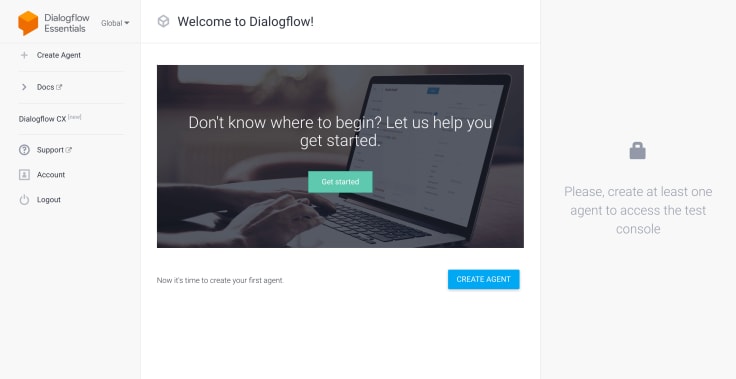
Dialogflow is a powerful natural language understanding (NLU) platform that allows the building of conversational chatbots with intricate personalities. Its ability to understand user intents and contexts makes it ideal for designing chatbots with complex personalities.
You can define custom intents, entities, and conversational flows to ensure your chatbot maintains a consistent tone and style. Dialogflow’s integration with Google Assistant and various messaging platforms makes it a popular choice for creating chatbots with personalities across multiple channels.
The platform’s machine-learning capabilities enhance the chatbot’s adaptability, making its personality more dynamic and genuine.
ManyChat
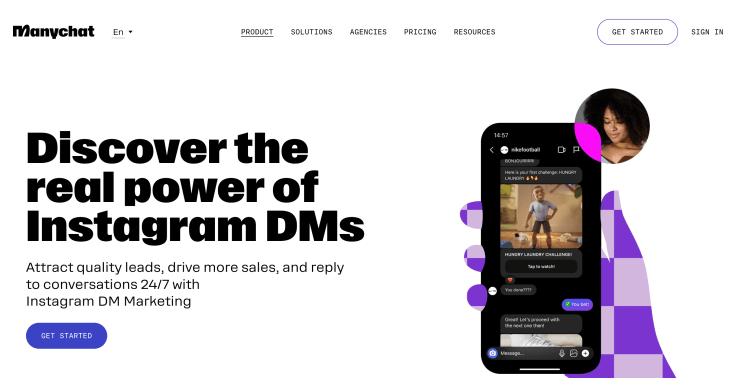
ManyChat is a popular platform for building chatbots for marketing and customer engagement on platforms like Facebook Messenger, WhatsApp, and Instagram. It offers a visual flow builder that makes designing personality-rich chatbots straightforward and fun.
Its focus on customer interaction tools, such as automated follow-ups, broadcasts, and personalized messages, allows brands to maintain a consistent tone and style throughout the user journey. With easy-to-use templates and customization options, ManyChat is an excellent choice for brands needing friendly, engaging chatbots with distinct personalities.
Tidio
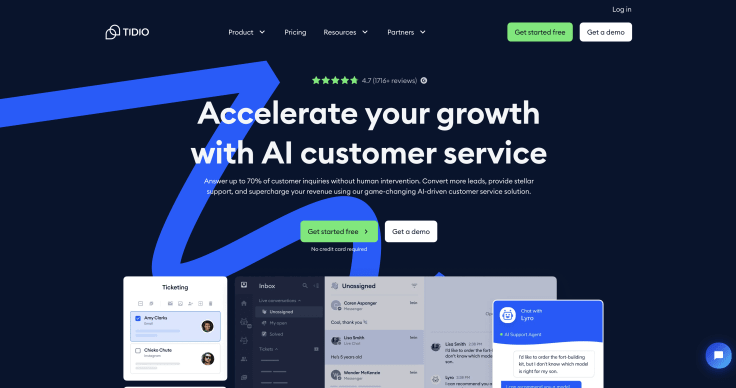
Tidio is a versatile chatbot platform that combines live chat, chatbot automation, and AI capabilities to enhance customer interactions. It offers a drag-and-drop editor that allows users to create chatbot personalities tailored to their brand’s identity.
With features like conversation tags, triggers, and conditional logic, you can craft sophisticated conversation flows that maintain consistency in tone and style. Tidio also provides robust analytics tools to help refine your chatbot’s personality based on real interactions.
Its compatibility with various platforms, including WordPress, Shopify, and Messenger, makes it an excellent choice for businesses of all sizes.
Landbot

Landbot is an excellent platform for building personality-rich chatbots using a visual drag-and-drop interface. It focuses on designing conversational experiences that feel natural and engaging, making it ideal for creating unique chatbot personalities.
Its no-code environment allows users to build conversational flows that reflect their brand’s tone and style without programming skills. Landbot’s tools for creating multi-channel chatbots ensure a consistent personality across various platforms, including websites, WhatsApp, and Messenger. With interactive UI elements and customizable conversation flows, it’s a fantastic choice for crafting memorable, personality-driven experiences.
These platforms are excellent choices for building chatbot personalities. They offer a combination of user-friendly design tools, AI training capabilities, and multi-channel integration. Whether a playful, friendly chatbot or a sophisticated, professional one, each platform provides the tools to build a consistent, engaging personality.
Why is ChatBot the best platform for creating a chatbot personality?
ChatBot is one of the best chatbot platforms for developing a chatbot personality. Because of its user-friendly visual interface and many customization options, designing conversational flows is straightforward, even for beginners.
Its drag-and-drop Visual Builder allows creators to script and organize conversations clearly, ensuring the chatbot’s persona remains intact throughout interactions. The platform provides predefined templates that can be customized, which is particularly useful for beginners who want to establish a specific tone or style quickly.
ChatBot supports AI training, allowing bots to learn from interactions and improve over time, which is essential for refining personality attributes based on user feedback. The platform’s integrations with popular messaging channels like Facebook Messenger, Slack, and websites make it versatile for deploying chatbots across various platforms with personas complementing brands.
Its analytics tools help creators monitor data and interactions, identify inconsistencies, and effectively refine the chatbot’s personality. Creating different conversational scenarios helps ensure the chatbot’s tone and style remain consistent even in complex dialogues.
The platform also provides personalization options, enabling bots to remember customer preferences and adjust their tone accordingly. Focusing on rule-based and AI-driven conversation design, it caters to those who want to balance structured persona traits with adaptive, evolving dialogue.
How to create a chatbot personality in ChatBot
ChatBot’s combination of intuitive tools, AI capabilities, and customization options makes it an excellent choice for building engaging and consistent chatbot personalities.
Let's see how to create a persona complementing a brand identity in a few minutes!
1. Create a bot
Start by creating the bot based on your chosen data scope. Use your website, help center, blogs, or other needed data.
2. Configure a Welcome message to start the chat on the right foot
ChatBot provides a Welcome message to start the chat. Ensure the messages start the conversation correctly and match your identity.

3. Change responses in the bot flow to match your brand identity
Check blocks in the created rule-based bot flow. These messages will be used to answer questions during the conversation. Ensure they match the tone your brand incorporates.
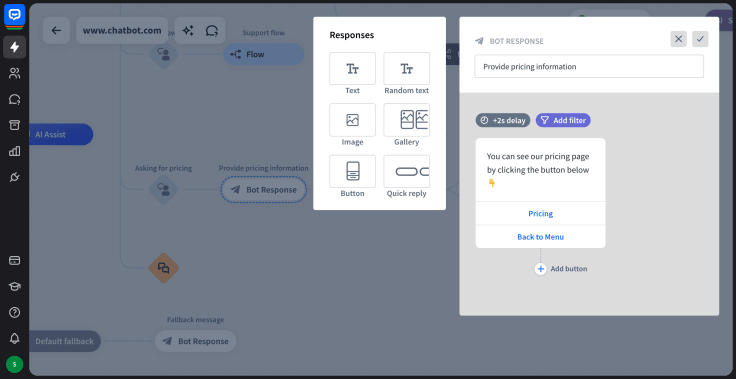
4. Customize the Chat Widget to match your brand style
A Chat Widget integration is the default integration ChatBot offers. It can be installed on a website, bringing the chatbot persona to any website. To match the persona to the brand, customize the Chat Widget. Match colors and buttons, add a chatbot avatar, and decide where the chatbot will be available for a conversation on a website.

5. Adjust the responses in the AI Training module to set the tone for future chats
While the created bot flow is rule-based, the AI model is dynamic and formulates responses based on the data pool provided during the chat creation process. Bring the persona to the model's answers in the AI Training module. Adjust already-provided responses with the personality characteristics and create answers to potential questions. The more answers you adjust, the more the AI technology learns and changes the tone of future responses.
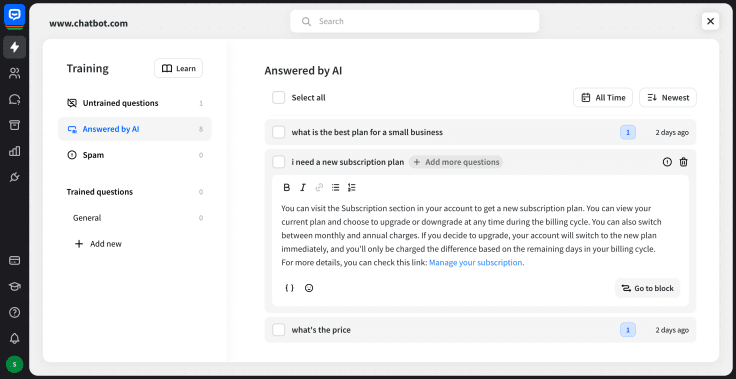
6. Test the chatbot in a controlled environment
Before introducing the chatbot persona to the world, check alignment with the brand on the Sample page. All customizations and adjustments to the bot personality will be there. You can ensure your brand has a well-designed personality.
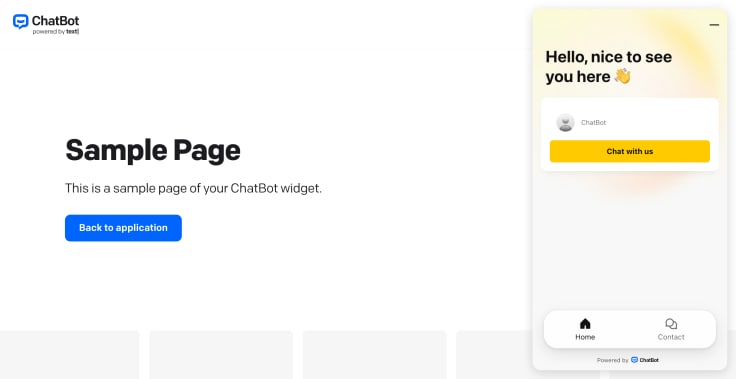
7. Consistently maintain the bot to ensure the personality matches the brand identity
As the market changes, the chatbot persona may need to change. Over time, your brand's first-designed AI bot personality might need to change. Do not hesitate to meet your customer expectations and enhance customer engagement. Change the responses and the rule-based bot flow, check the chatbot's tone, and use AI technology to the fullest.
Create a chatbot for your brand with a personality tailored to your style!
Conclusion
Creating a compelling chatbot personality is a powerful way to enhance user experience, build engagement, and establish trust. By carefully defining traits, tone, mood, and communication style, chatbot personas that feel authentic, relatable, and aligned with the intended purpose bring brands to the map.
Platforms like ChatBot make this process accessible with intuitive tools that support consistency, adaptability, and ongoing refinement. As chatbots continue to play a growing role in customer support, education, entertainment, and companionship, developing strong personalities becomes increasingly important.
A well-crafted chatbot personality improves user satisfaction and helps differentiate the bot from countless others in the digital landscape. A chatbot with a clear, consistent, and engaging personality is more likely to resonate with users, deliver meaningful interactions, and achieve its intended goals.
As technology advances, the art of designing chatbot personalities will continue to evolve, offering new opportunities for creativity and innovation.


